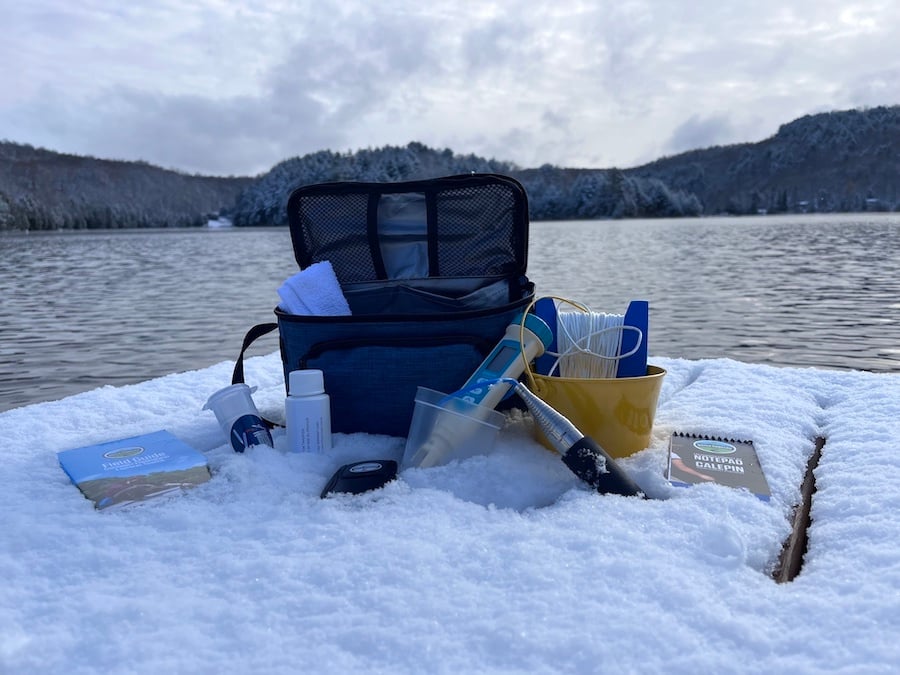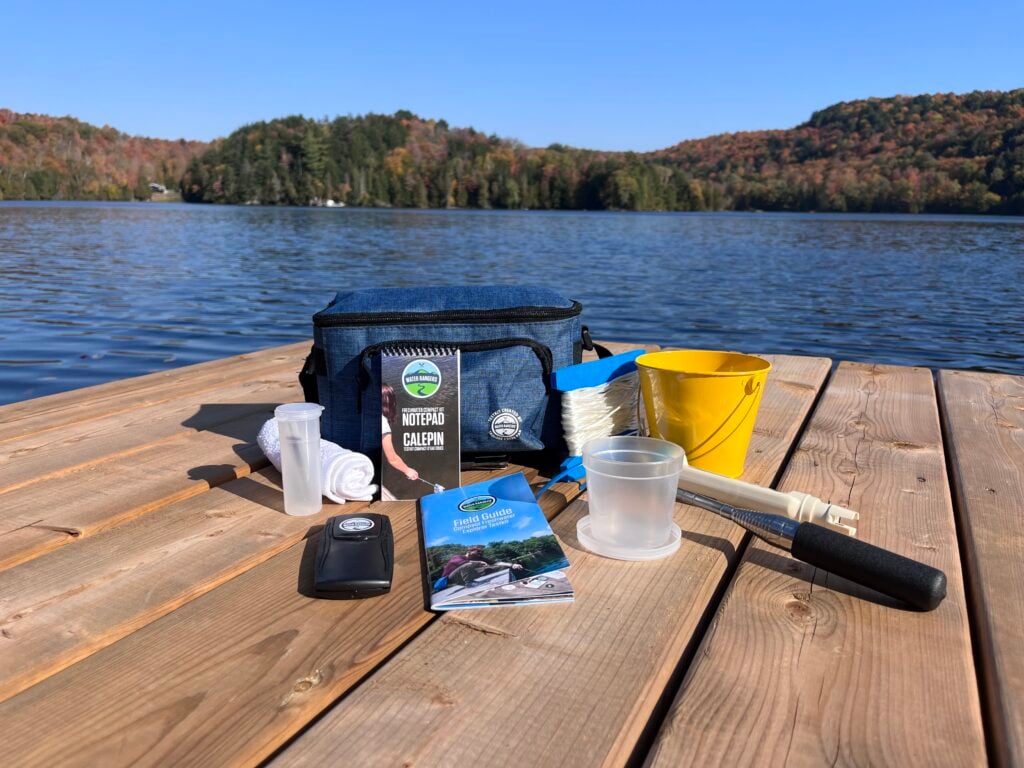Introducing our new Winter Testkit!

Inspired by some of our amazing testers who are already testing in the winter months, we designed this testkit to monitor road salt contamination in our waterways. Our new Winter Testkits come with:
- 10x chloride teststrips
- Chloride conversion chart (to interpret the test strip reading)
- Conductivity meter (tests for conductivity, TDS, and water temperature)
- Throw bucket and rope
- Reacher stick
- Water Rangers towel
- Field notebook and pen
- Sample container with lid
- Field guide
- 4 stickers and 3 badges
Over the past year, we’ve researched what other groups in Canada and the US are using to test for road salts in the winter, which led us to the Hach teststrips. They’re easy-to-use and accurate! Combined with conductivity and our new throw bucket, this kit will make winter water testing “snow’ easy!
Why monitoring road salts is important
Monitoring water quality for road salts is important for several reasons:
Road salt testing in action
For an example of a group that’s already testing for salts, check out this spotlight on Rainy River!
Ready to get testing yourself? You can get your Winter Testkit here!
- Environmental impact: Road salts, such as sodium chloride (table salt) and calcium chloride, are commonly used to de-ice roads and sidewalks during winter. When these salts are applied, they can wash into nearby water bodies through melting snow and ice or rainwater runoff. Elevated levels of road salts in water can have negative environmental impacts, harming aquatic ecosystems, plants, and wildlife.
- Aquatic ecosystems: High levels of road salts can be toxic to aquatic organisms, including fish, invertebrates, and amphibians. These salts disrupt the osmotic balance of aquatic life, making it difficult for them to regulate their water and salt intake. Prolonged exposure can lead to population declines and changes in species composition.
- Drinking water quality: Road salts can also find their way into groundwater sources, which may be used for drinking water supplies. Elevated salt levels in drinking water can have adverse health effects on humans, especially for individuals with certain medical conditions, such as high blood pressure.
- Infrastructure damage: Excessive road salt use can lead to the corrosion of infrastructure, such as bridges and buildings, which can be costly to repair or replace. Monitoring water quality helps identify when salt levels are exceeding safe limits and may contribute to infrastructure deterioration.
- Salt contamination: High salt concentrations can contaminate surface water and groundwater, making these resources unsuitable for various industrial and agricultural purposes. Saline soil and water can negatively impact crop production and the quality of water used for irrigation.
- Regulatory compliance: Many regions have regulations and guidelines for the allowable levels of various contaminants in water, including road salts. Monitoring water quality is essential to ensure compliance with these regulations and to take corrective actions when needed.
- Public awareness and education: Regular monitoring of water quality for road salts helps raise public awareness about the environmental impacts of salt use in winter road maintenance. It can also lead to improved salt management practices and the adoption of alternative de-icing methods that are less harmful to the environment.
To mitigate the negative impacts of road salts on water quality, it’s essential to monitor and manage their use carefully and adopt environmentally friendly de-icing practices when possible. This can help protect both aquatic ecosystems and public health while maintaining the safety of roadways during winter weather.
Learn more about road salts
To learn more about the effects of road salts on our waterways, and how your testing can help make a difference, check out this blog post written by our Director, Gabi.
Pre-order your Winter Testkit now!
Our new Winter Testkits are available at a discounted price of $150 until November 15, but our regular price will be $165. The testkit is estimated to ship mid-November. Learn more and pre-order here.
